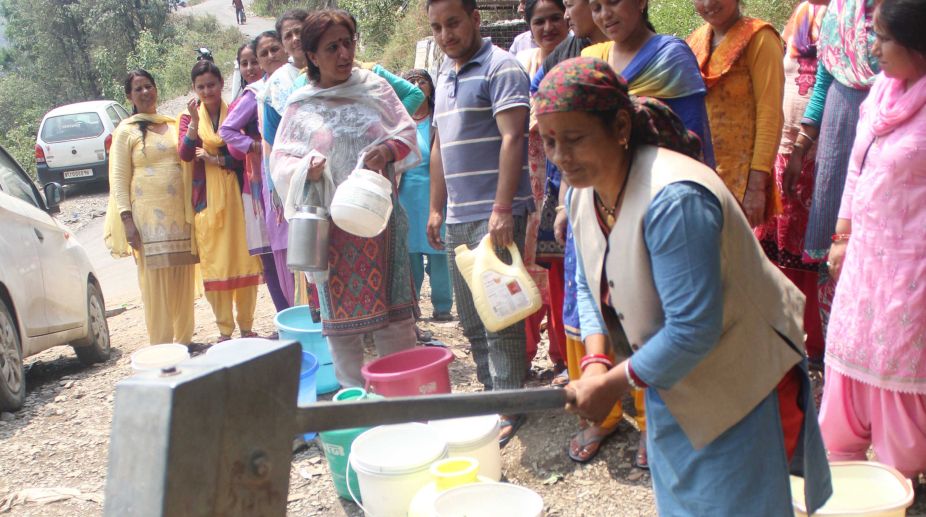Coffee houses and marketplaces have been, traditionally, news joints in all old cities. Shimla’s historic Coffee House on The Mall and the tourism department-managed Ashiana restaurant are regular “addas” of news-givers and news-mongers. Apart from “sunee sunaee baatein”, “udti udti khabarein”, and rumours planted by political and other worthies, media hounds often get a tip-off or two worth following up.
They have to merely look indifferent, and catch that crucial lowering of a tone carrying a whisper followed by a wink and the postscript: “bhai, suna to tha, aaj hi – kaafi strong source se!”. It’s up to the journo now to process and handle it suitably! Interestingly, many novel ideas and suggestions float round, especially from retired bureaucrats and Opposition party members. They have nothing at stake, since they need not implement them!
Advertisement
These days it’s all about the acute water shortage and the massive protests that have shaken up the city. Amidst many sharp allegations and counter allegations between politically minded ‘vellhas’ (those full of free time), a few useful sounding ideas have been gathered by The Statesman team in the last few days. We pass them here for the decision makers and the suffering public to consider and act suitably.
It is well known that we run after huge schemes and projects costing thousands of crores of investment. That’s considered prestigious, grand and vote-fetching by leaders who also pamper such idea- giving officials in high places. Press Conferences are held over bulky lunches and announcements are made that the government “proposes to launch” this scheme and that, “to solve the problem permanently” – as soon as the “Centre releases funds” for the project.
“We all know”, a man once in power confessed, “this will never happen and it’s all daydreaming or sheer propaganda. Foreign tours will be made to study the details of such projects, letters and follow-up visits for discussions will be made to Delhi blah, blah… We all know how many clearances will be needed and how fund-starved we are. In our system, it takes several, several years for anything to materialise. If the government changes, the new party in power may dump the project or scheme quietly”.
He cited scores of such instances of mega-schemes like Renuka Dam project hanging fire for over 30 years, Rohtang Tunnel still under construction, the super grand plan for a Ski village near Manali ….. the list was too long.
However, a few suggestions after this heated discussion made sense to us. The essence was, we should think of some feasible measures on a small scale, pending the real launching of mega schemes. Water management was the case in focus. No doubt, lectures, seminars, workshops and campaigns by experts exhorting the public to conserve water have long-range effects.
But, what we need is to demonstrate to the largely indifferent public “how” to use minimum water with the same result. If we merely lecture that half a bucket of water is enough for a bath, every one nods but is not impressed enough to translate it into action.
Show (through visuals) how only the lower layer of the water touches and washes the skin – and the rest we pour on the body merely flows over! To facilitate this further, campaign for manufacturing small size (call them bath size?) buckets instead of the jumbo ones we find in a majority of homes. The big ones should be only for storing water.
Similarly, popularise smaller size mugs in place of the extra-large ones adorning our washrooms. Appeal to, or order, the manufacturers and also persuade the public to buy accordingly. It’s human nature. You fill the big mug, or the big bucket – you tend to be liberal with the content. The concept of conservation does not occur then.
Another retired teacher suggested replacement of broad-mouthed taps with narrow ones. “Every modern home I have seen has big, yawning taps. Turn them on, water flows out in big streams. Even elderly ones do not open them slightly so that only the quantity required for a job comes out. You cannot imagine how much water is wasted while washing utensils, clothes and cooking.
“According to him (he swears he has observed keenly) housemaids, servants, housewives, children — in fact everyone is insensitive. “The only way”, he says, is to “sensitise people by campaigning for or even making it mandatory to replace these taps. Maybe, one wide-mouthed tap can be allowed in each home for use in case of fire.”
Similarly, in a flat with two toilets, says another old-timer, one should be of “desi (Indian) style that consumes less water. In the West also they have now recognised that squatting is the best posture for evacuation. It is hygienic also, limiting the incidence of now widely prevalent UTI (Urinary Tract Infection).”
According to him, you have to flush the Western pot both before and after each use especially when a number of people use the same pot. But the desi one can be cleaned with water in a mug or two. He also recounts how people turn on the taps in the wash basin and brush their teeth while the water keeps flowing down. “We have to reverse the adages like “spending money like water…” he says.
All such “non-experts” have told The Statesman vehemently that such “small” steps are necessary for promoting an environment and mindset conducive for the conservation of water in a big way. Water harvesting, saving rainwater from home-roofs etc can follow such measures. It has to be a movement.











